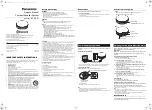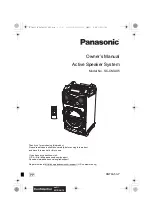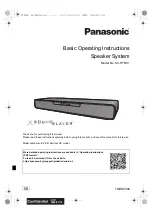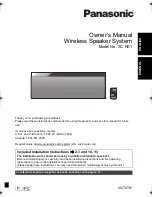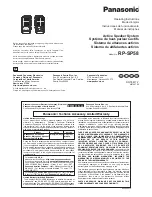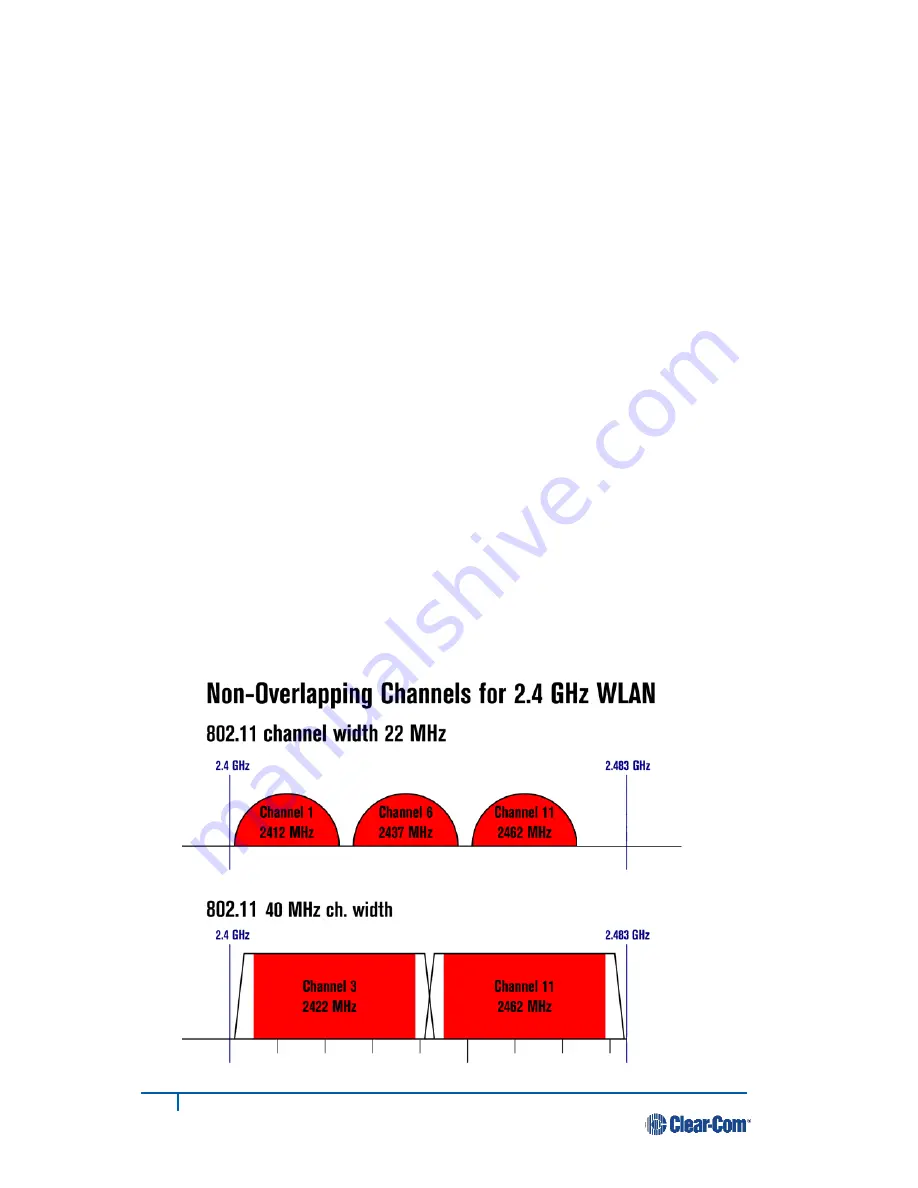
30
Clear-Com HME DX210 Operating Instructions
Interference Mitigation
Certain techniques can be used in an attempt to mitigate interference between different equipment in the
2.4 GHz spectrum. Some of these are:
Physical separation
. If possible, equipment operating in the 2.4 GHz spectrum should be
operating as far as physically possible from the HME base station. A Wi-Fi access point or router
is a common piece of equipment that could interfere with the DX410 system, or vice versa.
These two pieces of equipment in particular should not be located close together.
Spectral separation
. Most Wi-Fi access points allow the administrator to set the channel and
bandwidth that system operates on. Some systems employ an ‘auto’ mode, in which the Wi-Fi
access point will automatically selected the channel. With Wi-Fi access points, it is sometimes
advantageous to manually select a channel number to keep the Wi-Fi transmission at a fixed
location.
NOTE
: If the Clear-Com system does not have AFH, then the base station should be set to operate in
the region of the 2.4 GHz band where the Wi-Fi access point is not operating. For example, if the Wi-Fi
access point is set to Wi-
Fi channel 1, the base station should be set to operate in the ‘High’ band. If the
Wi-
Fi access point is set to channel 11, the base should be set to operate in the ‘Low’.
Spectral efficiency
. Wi-Fi systems employ a standard sometimes referred to as 802.11. The
number “11” is simply the number given to the standard by the Institute of Electrical and
Electronics Engineers (the IEEE). Modern Wi-Fi routers will allow operation employing the
802.11n mode. This mode will allow higher data rates, but it also may consume twice the
number of radio channels. If the Wi-Fi router is set to 802.11n mode, it is best to limit Wi-Fi
bandwidth to 20 MHz.
Alternate band selection
. While most Wi-Fi systems operate at 2.4 GHz, which is the same
band as the DX410 system. Most allow operation at 5 GHz. If possible, move any Wi-Fi access
points and equipment to 5 GHz. This of course requires all Wi-Fi equipment to be 5 GHz
capable, and most older equipment may only allow 2.4 GHz operation. Selection of 5 GHz may
also not be desirable if the Wi-Fi network is for customer access.























